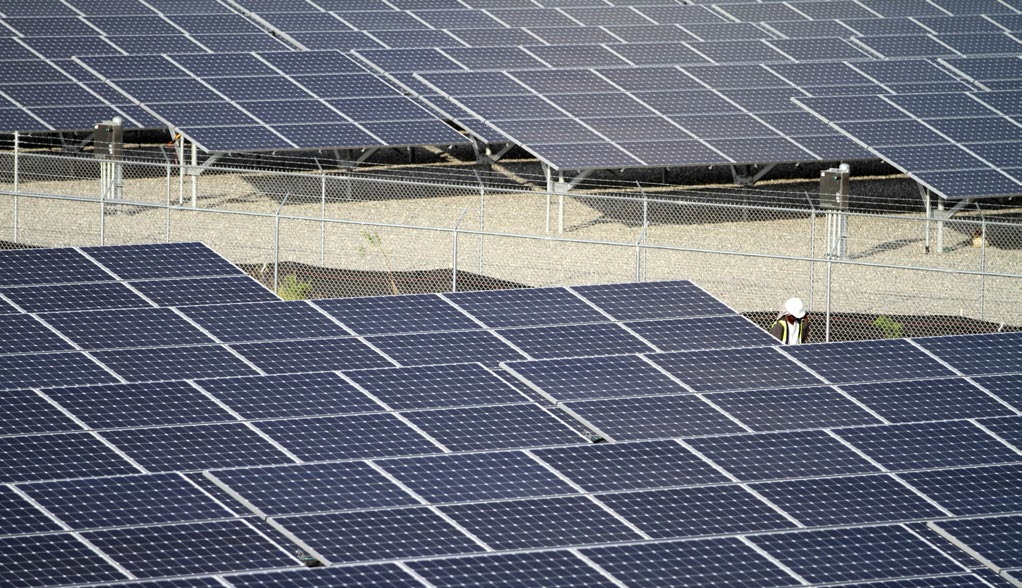Executive
The Crippling Economic Costs of Green Energy Subsidies
The green energy subsidies in the Inflation Reduction Act would cost too much and not yield the energy they promise.

The green energy subsidies in the Inflation Reduction Act (IRA) have been justified by the Biden Administration as a booster of U.S. economic growth and jobs. But when the subsidies are tallied and the overall impacts evaluated, the IRA is a job and economic growth killer.
Under the IRA, the lion’s share of subsidies will be paid to wind and solar developers. The subsidies will not expire until electric industry carbon emissions fall by at least 75% below 2005 levels, after which they will gradually decrease. Even the most optimistic forecasts prepared by the U.S. Energy Information Administration (EIA) show that this will not occur until at least 2046. Thus, the subsidies for wind and solar will continue unabated for decades. In total, the subsidies will far exceed what the U.S. government spent in today’s dollars to combat the Great Depression.
The single largest subsidy is the federal investment tax credit (ITC). Most wind and solar projects will be able to claim a minimum 30% ITC, plus be eligible for an additional 10% credit if the projects rely on domestic manufacturing for components.
The EIA’s optimistic forecast projects about 900,000 megawatts (MW) of solar photovoltaics, 350,000 MW of onshore wind turbines, and 24,000 MW of offshore wind by 2046. If all of this generation is built, it will result in direct ITC subsidies totaling between $500 billion and $1 trillion, depending on construction costs. The greater the costs, the larger the subsidies. Although wind and solar proponents still claim costs are falling, the reality is the opposite. Offshore wind developers, especially, are clamoring to renegotiate contracts they signed previously, including guaranteed price adjustments for increasing costs, and relaxing the domestic content requirement so they can claim the additional 10% ITC.
Despite spiraling deficits – almost $2 trillion in the fiscal year that ended this past October – green energy subsidies will be financed with still more government debt. With the increase in interest rates to normal levels, financing costs will soar, adding an estimated $500 to $800 billion to the bill costs, almost as much as the subsidies themselves.
The envisioned spending and subsidies for green energy, several hundred billion dollars annually just for wind and solar generation, will distort energy markets. First, they will crowd out more productive private investment in the energy sector and reduce the resources available for more efficient forms of generation, especially small modular reactors. Second, as the deficit increases further, higher interest rates will crowd out private investment in more productive private sectors of the economy.
Along with the Administration’s push to “electrify” the economy, such as higher vehicle mileage standards that act as a de facto mandate for electric vehicles and proposed bans on natural gas appliances, the result, as has been experienced in Europe, will be soaring electricity prices. Those higher prices will reduce economic growth and employment, far more so than the green energy investments can boost it. Although the subsidies will benefit wind and solar developers, but the overall economic impacts for the country will be crippling.
One gauge of the adverse economic impacts of green subsidies is the cost to taxpayers to create the promised thousands of green energy jobs, especially for offshore wind. Using offshore wind developers’ claimed employment impacts, the average subsidy for each green job created will be over $2 million per year. Forcing taxpayers to pay millions of dollars each year for each job created, while claiming that doing so will bolster the U.S. economy, is Alice in Wonderland economics.
Politicians who promote green energy and their own short-term self-interests may prefer to ignore basic economic realities, but those economic realities will have their revenge. Eventually, the profligate spending on low-value green energy will collapse under its economic weight, having inflicted much socioeconomic damage.
Sadly, this is not an experiment that the U.S. needs to undertake; European experience and basic economics tell us all we need to know. But as the lyrics from the old song begin, “fools rush in …”
This article was originally published by RealClearEnergy and made available via RealClearWire.
Jonathan Lesser is the president of Continental Economics, a senior fellow with the Discovery Institute, and an adjunct fellow with the Manhattan Institute. His report, “Green Energy and Economic Fabulism,” was recently published by the Global Warming Policy Foundation.
-

 Civilization4 days ago
Civilization4 days agoTrump’s Venezuela Gamble and America’s Shifting National Security Strategy
-

 Civilization4 days ago
Civilization4 days agoOperation Absolute Resolve: Anatomy of a Modern Decapitation Strike
-

 Civilization3 days ago
Civilization3 days agoTen Reasons To Cheer the Arrest of Maduro
-

 Civilization5 days ago
Civilization5 days agoTrump delivers deeds, not words
-

 Civilization1 day ago
Civilization1 day agoOne Fell Swoop: Lawsuit Eyes Death Blow to Racial Preferences
-

 Civilization3 days ago
Civilization3 days agoTrump’s New Executive Order on Space Has the Right Stuff
-

 Executive2 days ago
Executive2 days agoWaste of the Day: $1.6T in Wasteful Spending in Rand Paul’s “Festivus” Report
-

 Guest Columns2 days ago
Guest Columns2 days agoAdvice to Democrats Regarding Maduro Arrest: Resist Reflexive Opposition








